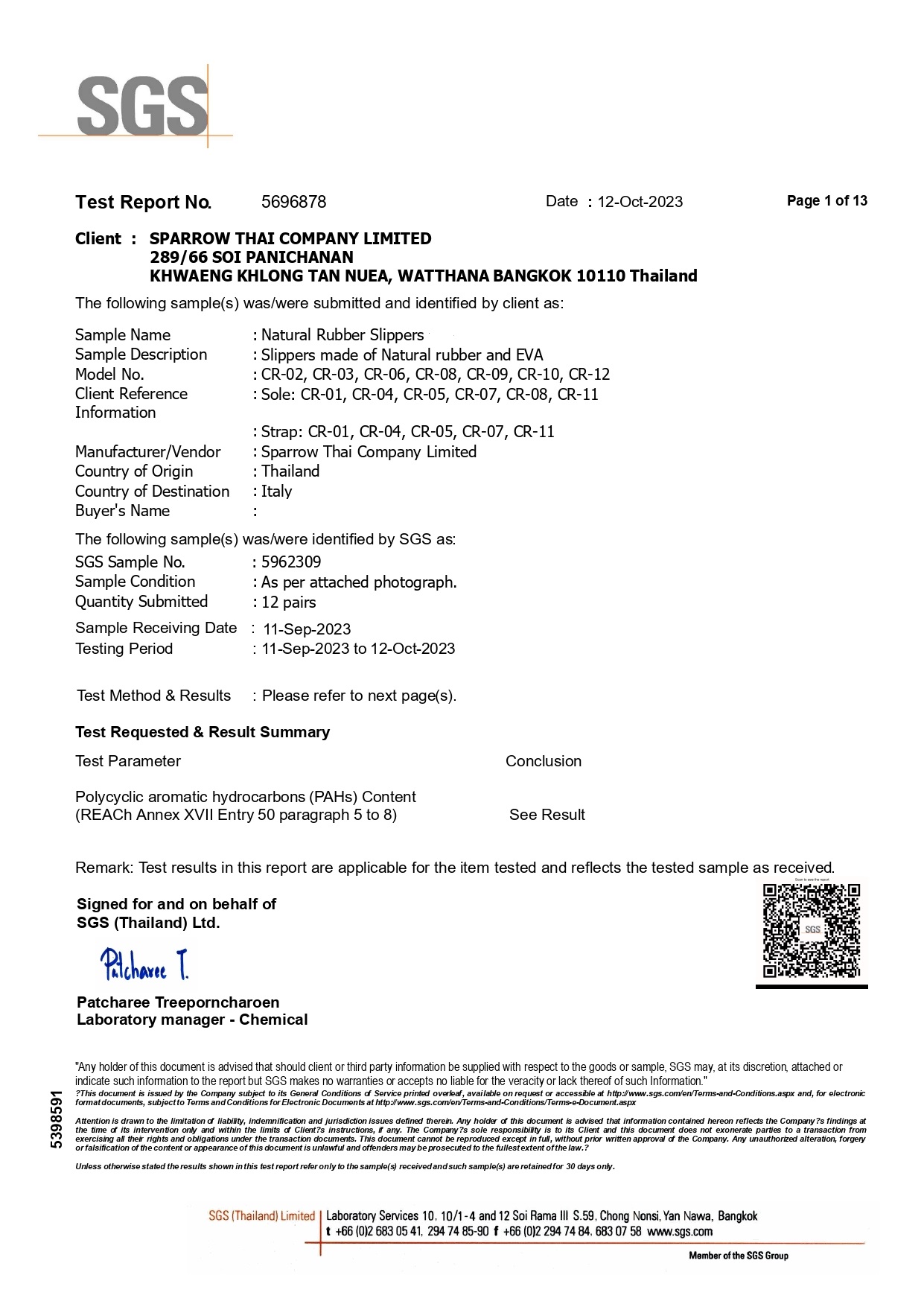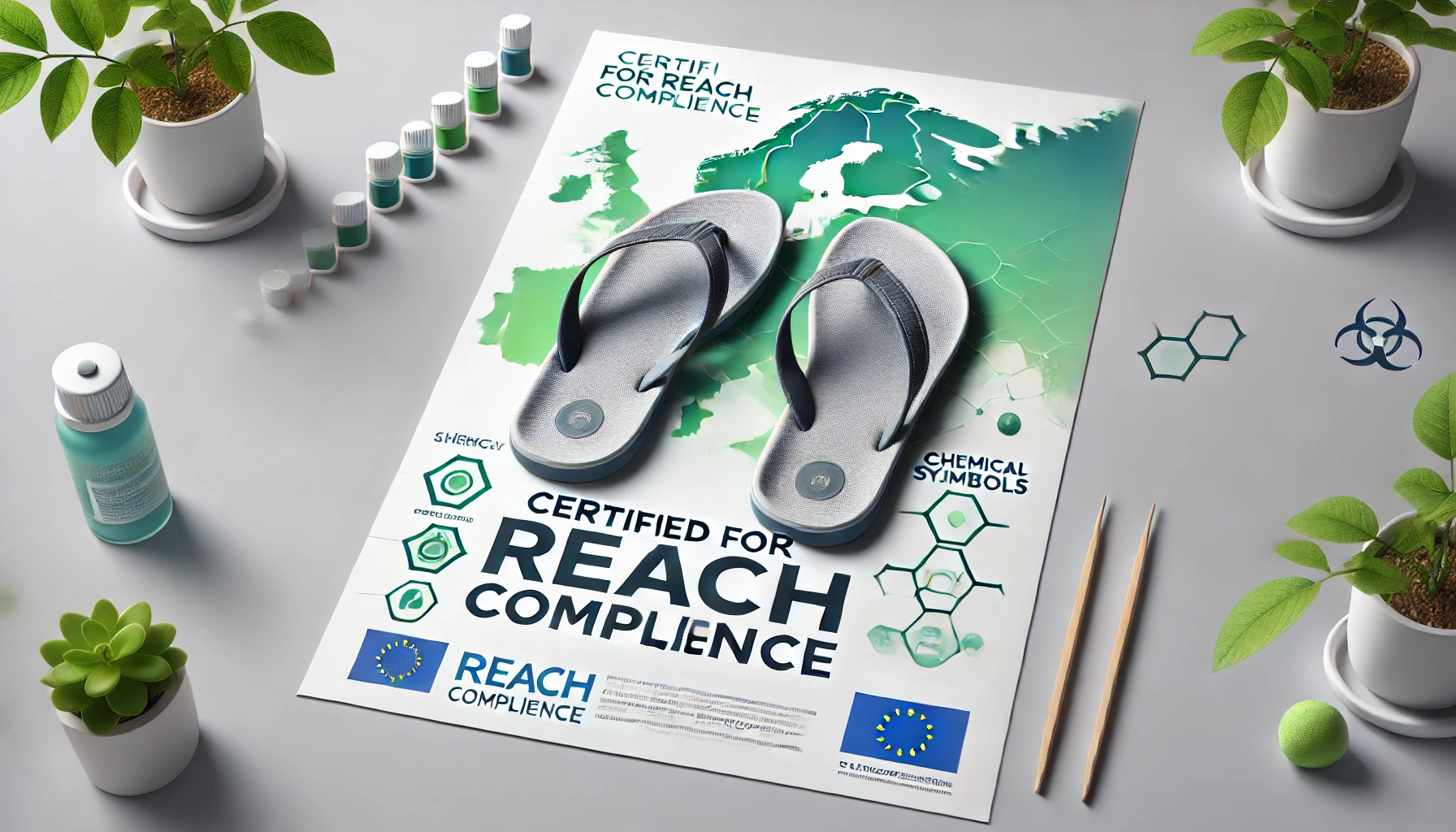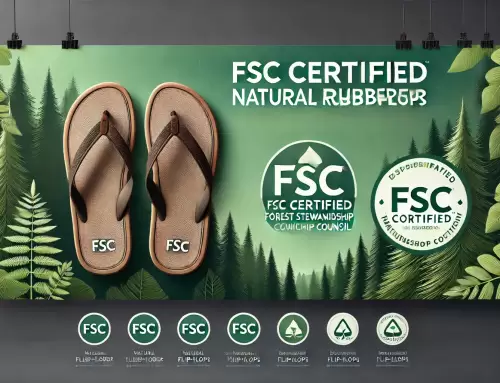Understanding REACH Test PAH 8 and PAH 15: A Guide for Natural Rubber Flip-Flops
When entering the European market with natural rubber flip-flops, manufacturers and retailers must ensure compliance with a series of regulations that guarantee the safety of their products. One such regulatory standard is the REACH test for Polycyclic Aromatic Hydrocarbons (PAHs), which plays a pivotal role in ensuring that products are free from harmful substances.
In this blog, we will dive into the details of REACH test PAH 8 and PAH 15, focusing on the requirements set by European authorities for natural rubber flip-flops. We will also discuss the importance of these tests, how they can be passed, and why they are vital for your business and consumer safety.
What is REACH Test?
Before understanding PAH limits, it’s important to know what REACH stands for. REACH is the acronym for Registration, Evaluation, Authorisation, and Restriction of Chemicals. It is a European Union regulation enacted to manage the production and use of chemical substances and ensure that human health and the environment are protected from the risks associated with harmful chemicals.
REACH test European regulations apply to a wide range of products, including natural rubber flip-flops, to ensure they do not pose risks to users.
Why Focus on PAH in Natural Rubber Flip-Flops?
Polycyclic Aromatic Hydrocarbons (PAHs) are a group of chemicals that occur naturally in coal, crude oil, and gasoline. They can also be released into the environment when burning fossil fuels. While PAHs are found in a variety of materials, they can also be present in rubber and plastic materials, including footwear.
For natural rubber flip-flops, PAHs can potentially migrate from the rubber to the skin of the wearer. Long-term exposure to PAHs is a health concern as they have been linked to cancer and skin irritation. Hence, European authorities have set stringent guidelines under the REACH regulation to limit the presence of PAHs in consumer products, including footwear.
PAH 8 and PAH 15: The Two Key Limits
When it comes to PAHs in footwear, the two most important standards to consider are PAH 8 and PAH 15:
- PAH 8: This refers to the eight specific PAHs that have been identified as particularly hazardous to human health. These are:
- Benzo[a]pyrene
- Benzo[e]pyrene
- Benzo[a]anthracene
- Chrysene
- Benzo[b]fluoranthene
- Benzo[j]fluoranthene
- Benzo[k]fluoranthene
- Dibenzo[a,h]anthracene
- PAH 15: This expands the list to include 15 PAHs that need to be monitored, although the REACH regulation primarily focuses on the PAH 8 for the strictest limits.
REACH Test Requirements for Natural Rubber Flip-Flops
Under REACH, consumer goods such as footwear must adhere to specific concentration limits for PAHs. For natural rubber flip-flops, these limits depend on the type of product and its intended use. Here are the key thresholds:
- PAH 8 Limit for Consumer Products:
- For articles intended to be in prolonged direct contact with the skin or oral cavity (such as footwear), the allowable concentration for each of the PAH 8 is set at 1 mg/kg (0.0001% by weight).
- PAH 15 Limit for Industrial Use:
- For items not intended for regular or prolonged contact with the skin, but which may still involve occasional skin contact (e.g., industrial footwear), the limit for each PAH 15 is 10 mg/kg (0.001% by weight).
Why Are These Limits Important?
The presence of PAHs in consumer products, including flip-flops, poses significant health risks:
- Carcinogenic Potential: Some PAHs, particularly benzo[a]pyrene, are classified as carcinogenic. Long-term exposure to these substances increases the risk of developing cancers, especially skin cancer when the chemicals come into contact with the skin over extended periods.
- Skin Irritation: PAHs can cause allergic reactions or dermatitis in sensitive individuals.
- Environmental Concerns: PAHs are persistent environmental pollutants. Limiting their use helps reduce environmental contamination, protecting both ecosystems and human populations.
How to Pass the REACH PAH Tests
To meet the stringent standards of the REACH regulation, manufacturers of natural rubber flip-flops must adopt robust measures to minimize PAH content. Here are the steps that can be taken:
1. Source High-Quality Natural Rubber
The raw material used in flip-flop production plays a crucial role in determining PAH levels. Manufacturers should source natural rubber from suppliers who can provide certification that their materials meet the PAH limits required by REACH regulations. Additionally, raw materials should be regularly tested before use in production.
2. Use PAH-Free Additives and Processing Oils
During the production process, various chemicals and additives are used to enhance the properties of natural rubber. Some of these chemicals, particularly certain processing oils, can contain PAHs. By selecting PAH-free oils and additives, manufacturers can significantly reduce the PAH content in the final product.
3. Control Production Conditions
PAHs can form during high-temperature manufacturing processes, such as vulcanization. Manufacturers must carefully monitor and control temperatures to prevent the formation of PAHs during production. Using more environmentally friendly production techniques, such as low-temperature curing, can help reduce PAH formation.
4. Conduct Regular Testing
One of the most important steps in ensuring compliance with REACH is regular testing. Manufacturers should test their products at various stages of production to ensure that PAH levels are within the permissible limits. Independent third-party laboratories that specialize in chemical testing should be employed for accurate and reliable results.
5. Implement Quality Control Systems
A rigorous quality control system should be in place to monitor every aspect of production, from raw material sourcing to the final product. By implementing best practices in quality control, manufacturers can detect any potential issues early and make necessary adjustments to prevent non-compliance.
Importance of Compliance with REACH PAH Regulations
Adhering to the PAH limits set by REACH is not only a regulatory requirement but also offers several advantages for your business:
1. Access to the European Market
Without meeting the REACH PAH requirements, your products cannot be legally sold in the EU. By ensuring compliance, you gain access to a vast market of over 500 million consumers in the European Economic Area (EEA).
2. Improved Consumer Trust
Consumers are increasingly aware of the potential dangers posed by harmful chemicals in everyday products. Demonstrating that your natural rubber flip-flops are REACH-compliant helps build trust with customers, who will view your brand as safe and reliable.
3. Brand Reputation
Being compliant with stringent European regulations boosts your brand’s reputation for producing high-quality, safe products. This reputation can be leveraged in marketing to highlight your commitment to consumer safety and environmental responsibility.
4. Avoiding Fines and Penalties
Failure to comply with REACH regulations can result in significant fines, legal penalties, and the removal of products from the market. Ensuring that your natural rubber flip-flops meet PAH limits helps avoid these costly consequences.

Conclusion
The REACH test for PAH 8 and PAH 15 is a critical requirement for manufacturers of natural rubber flip-flops looking to sell their products in the European market. These tests protect consumers from harmful substances and ensure that products are safe for prolonged skin contact. By sourcing high-quality materials, using PAH-free additives, controlling production conditions, and conducting regular testing, manufacturers can ensure that their products meet the stringent limits set by REACH.
Compliance not only opens the door to new markets but also helps build trust with consumers and strengthens a brand’s reputation for quality and safety. For businesses in the footwear industry, particularly those focusing on eco-friendly products like natural rubber flip-flops, adhering to REACH regulations is essential for long-term success.





